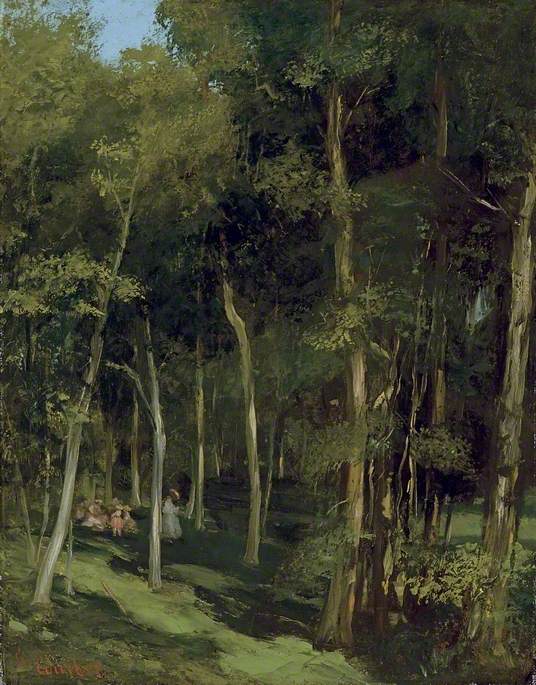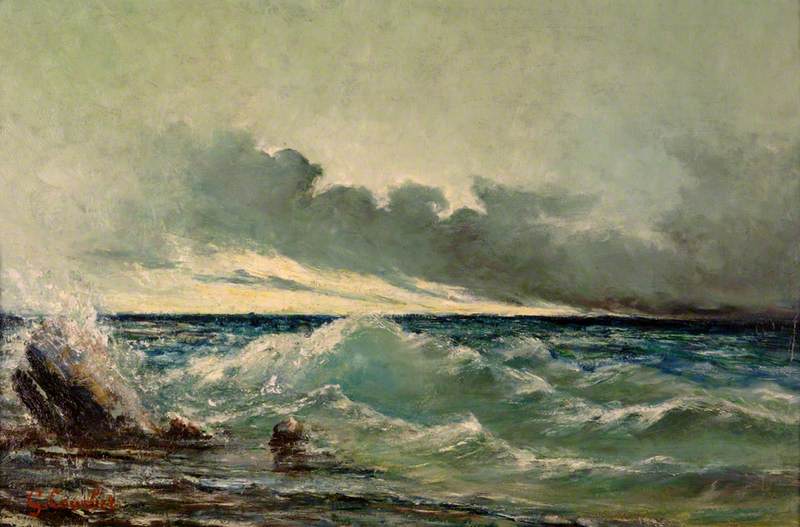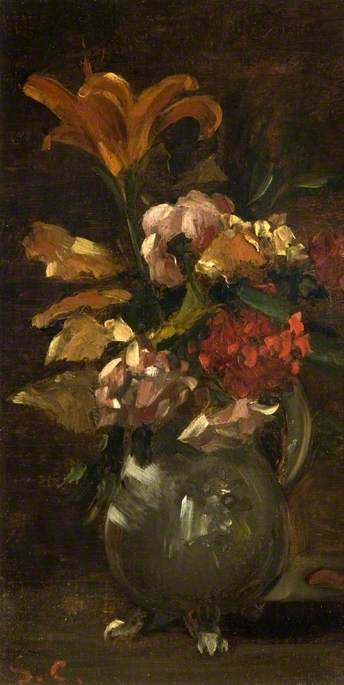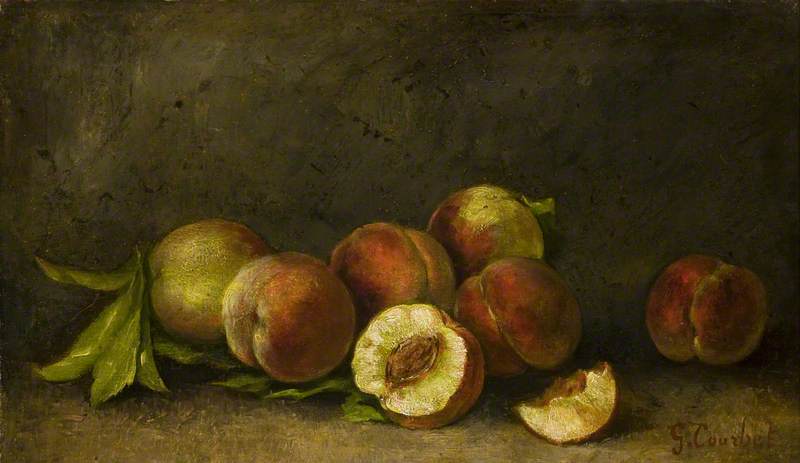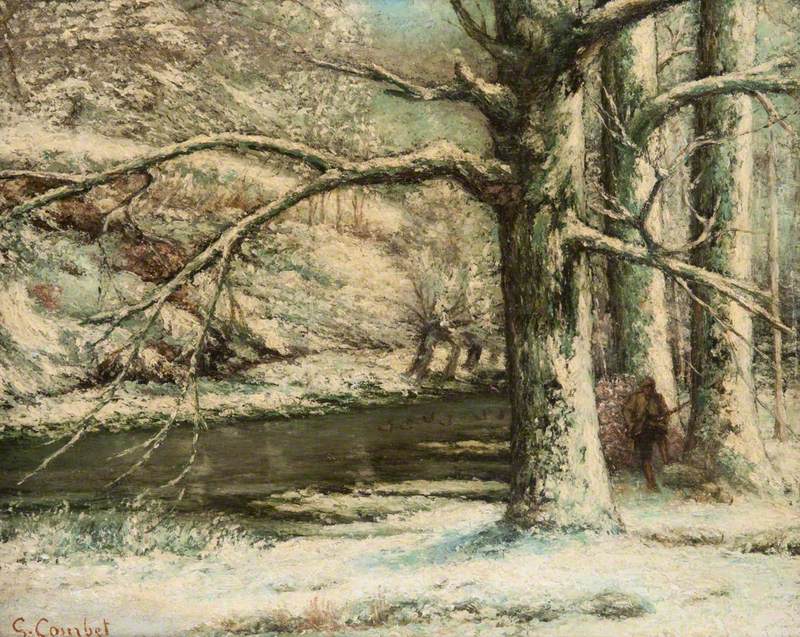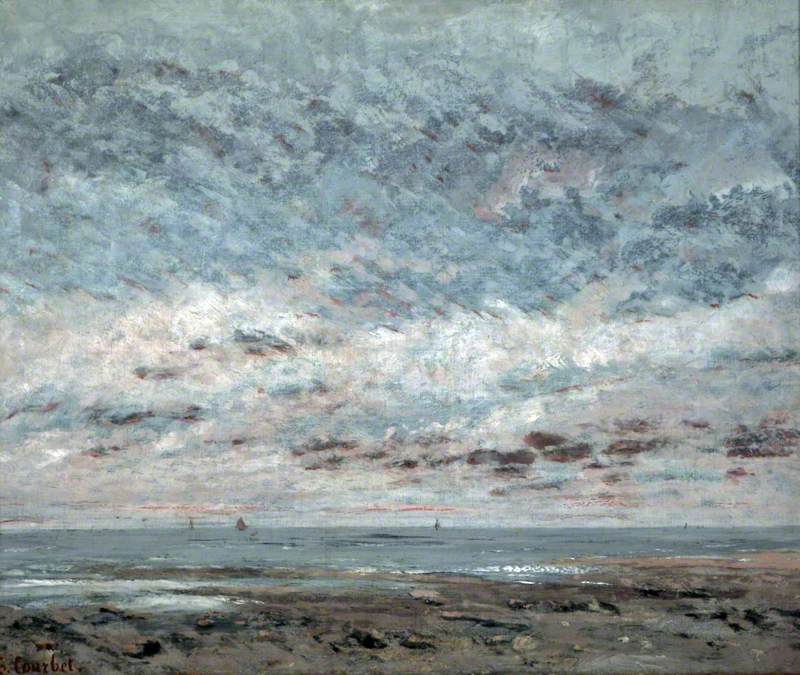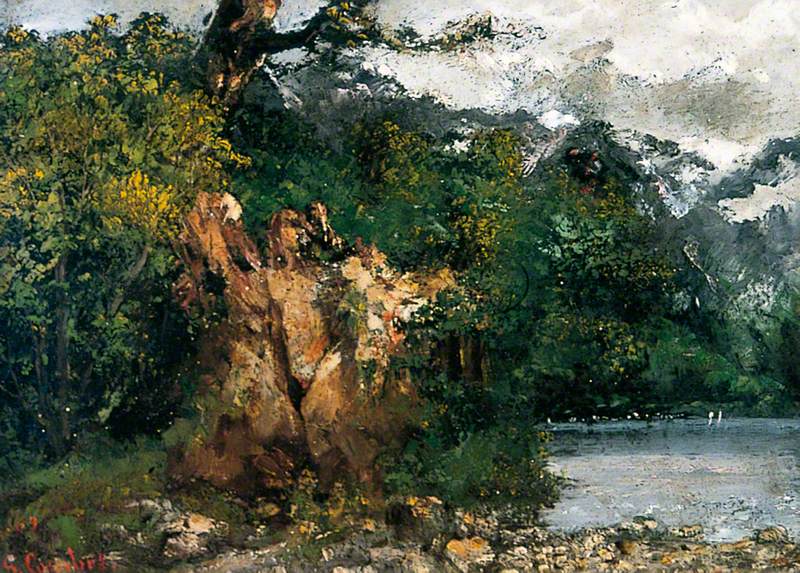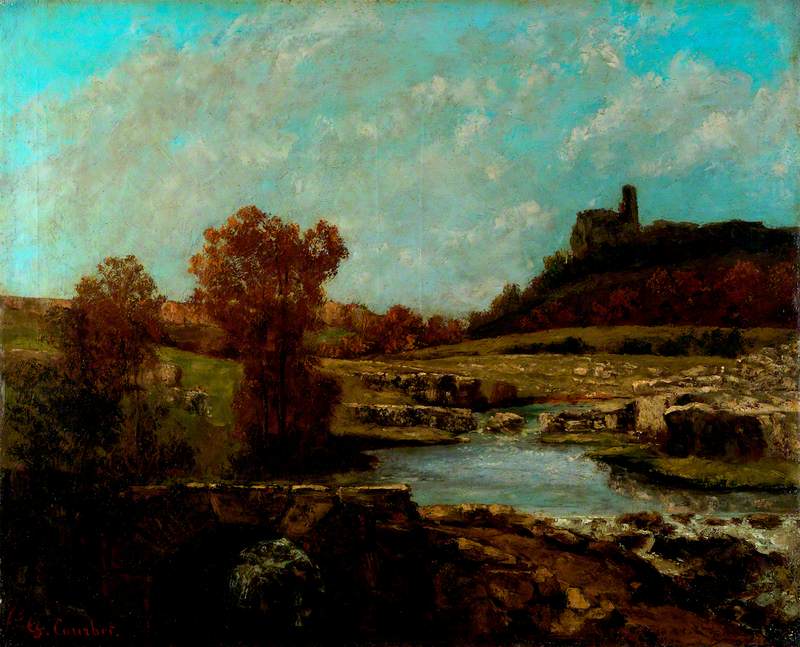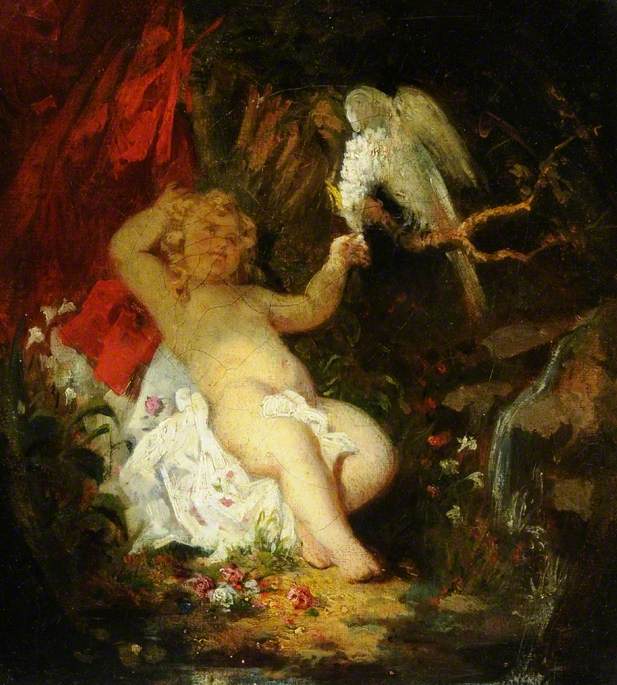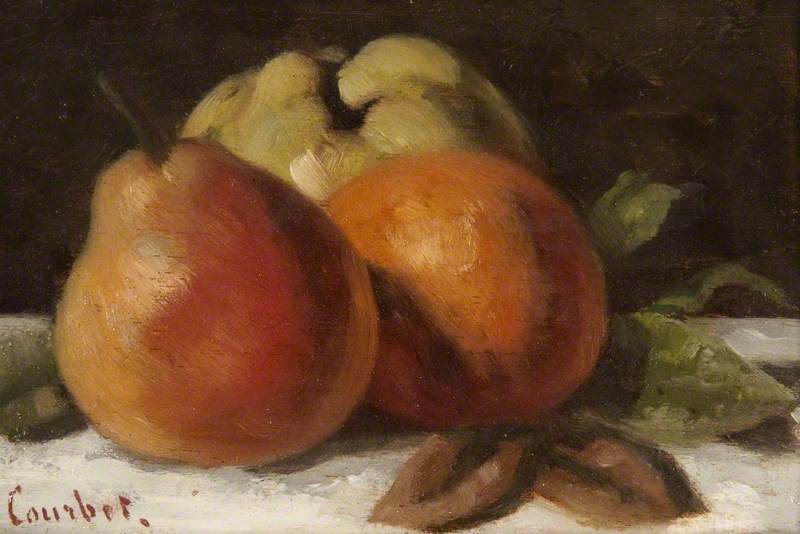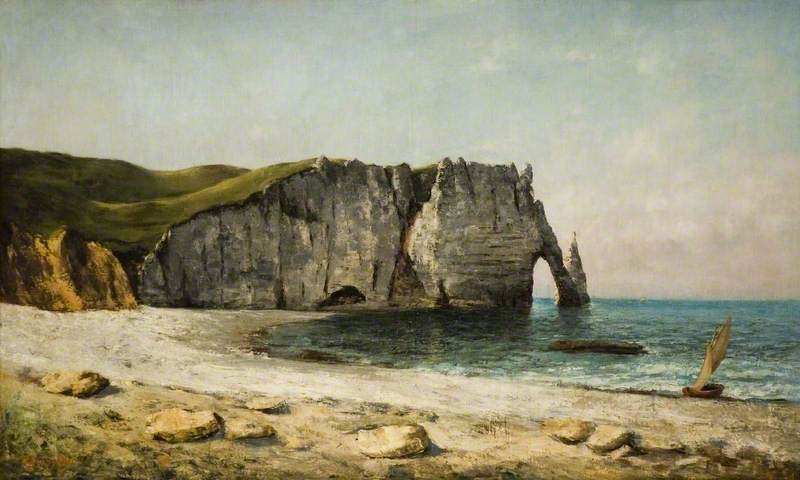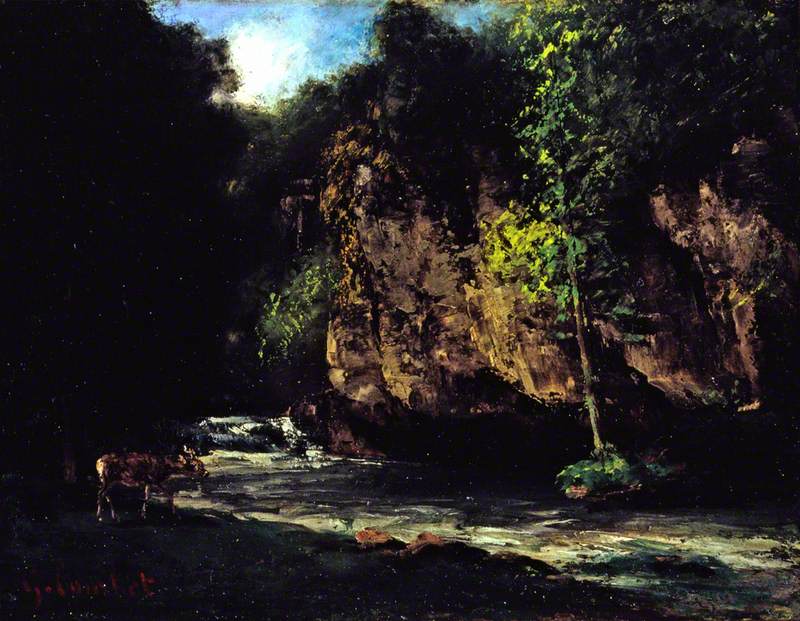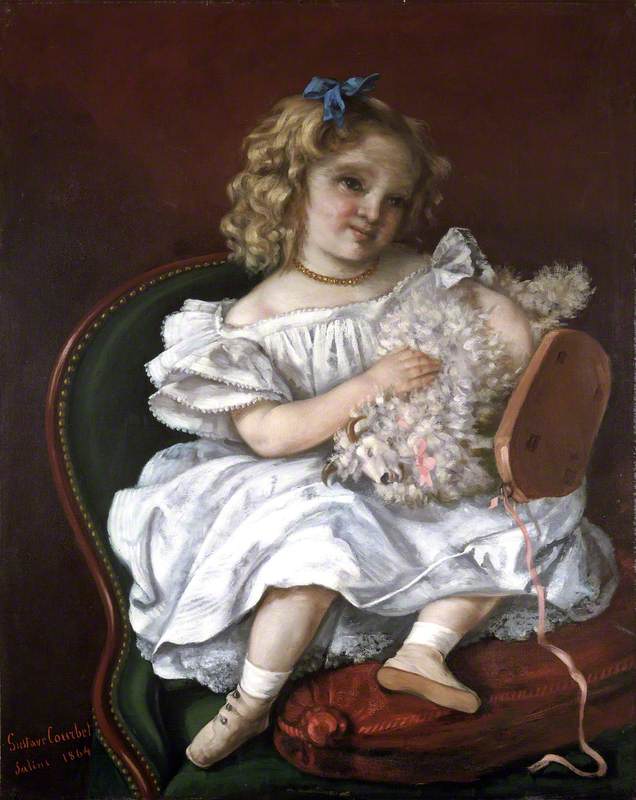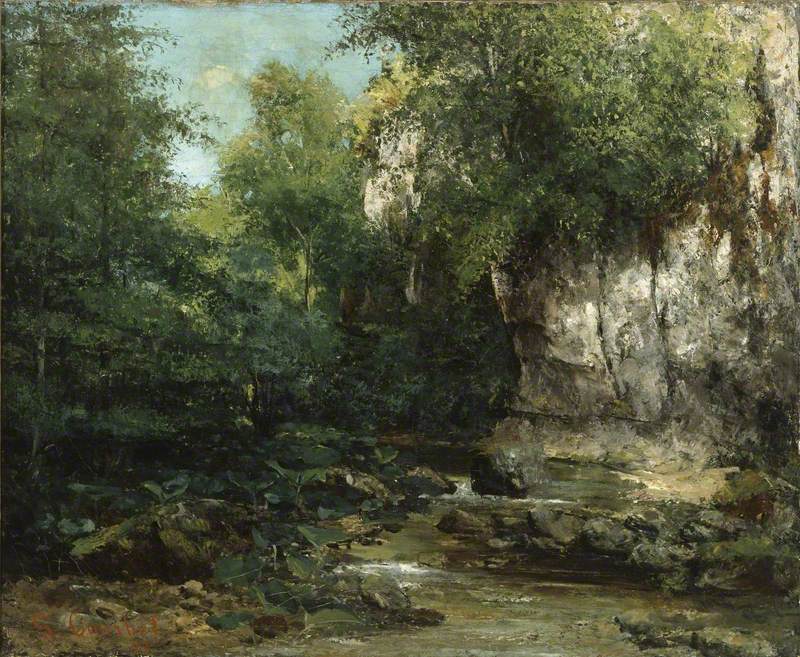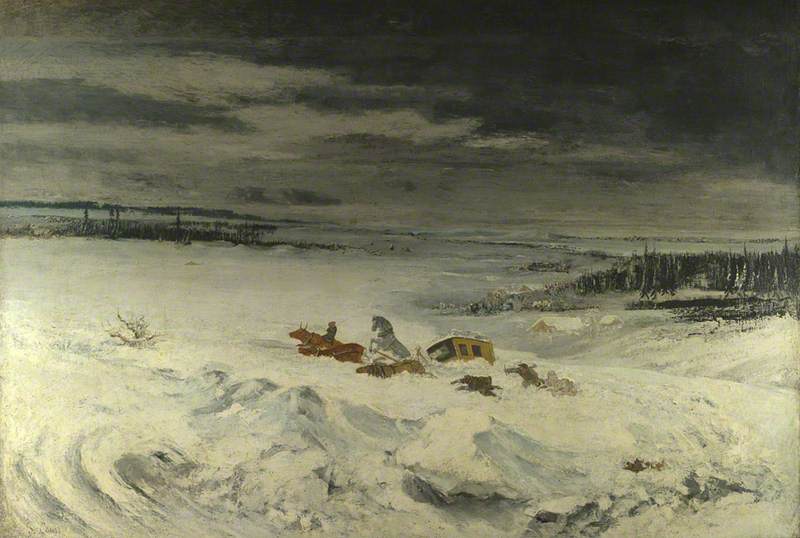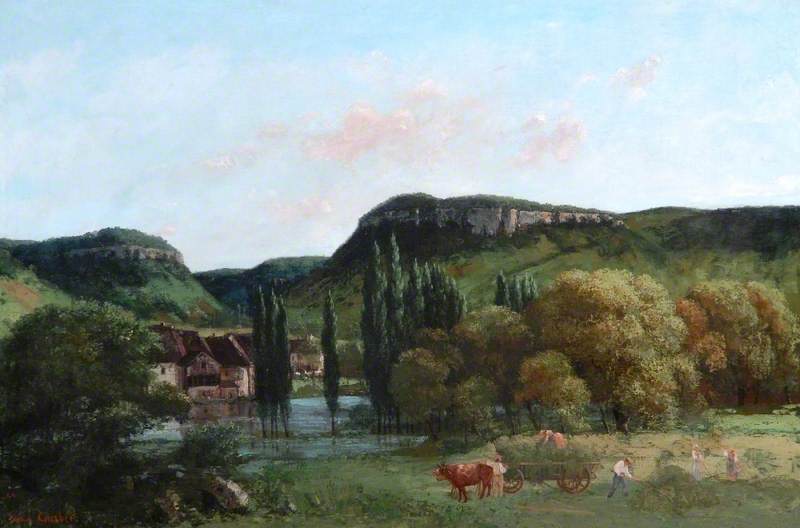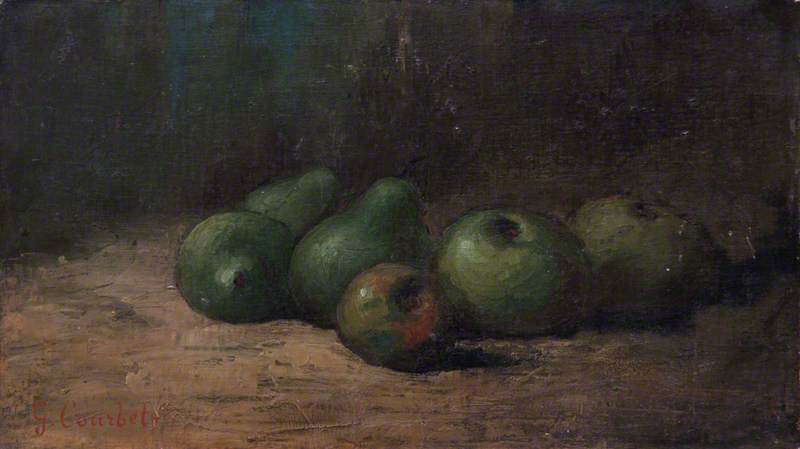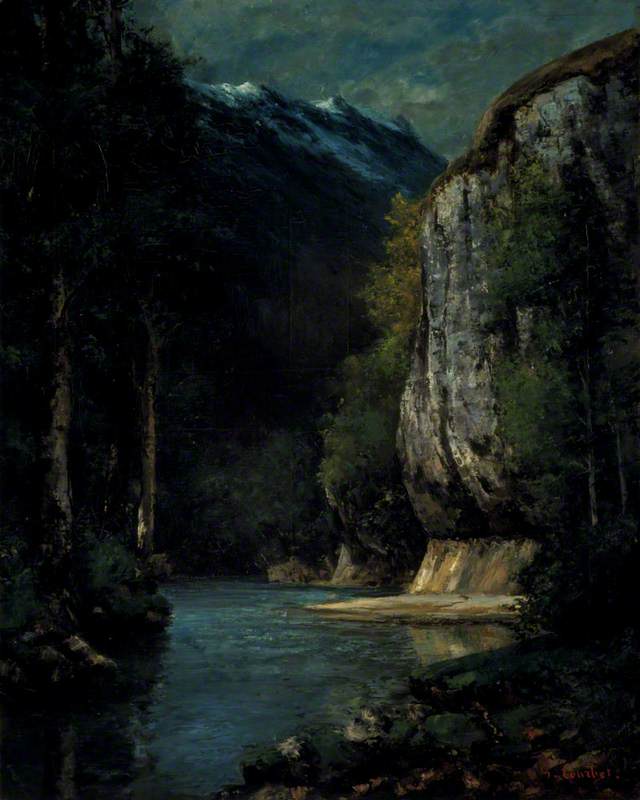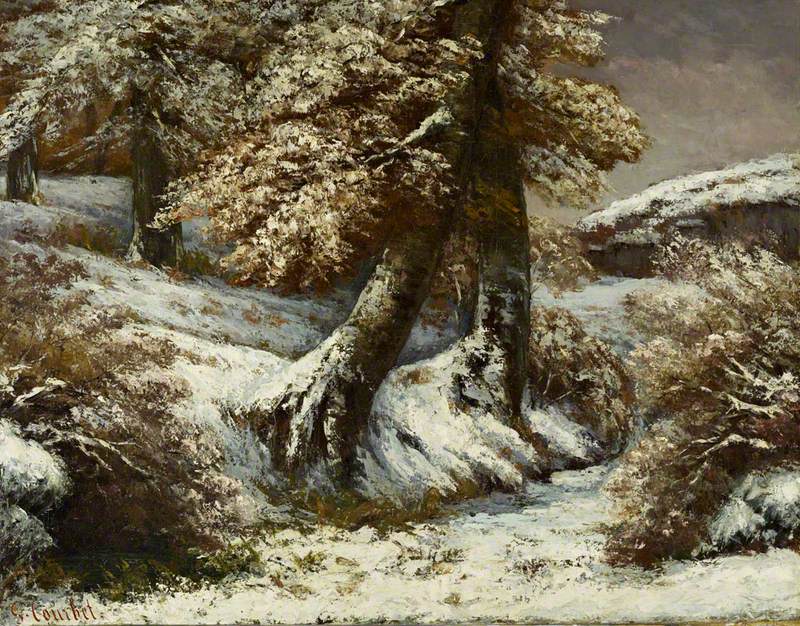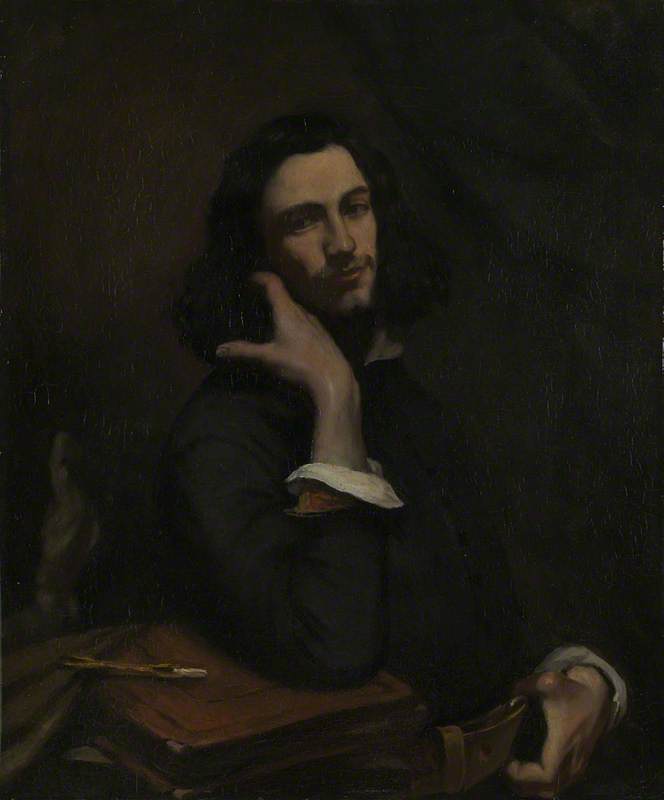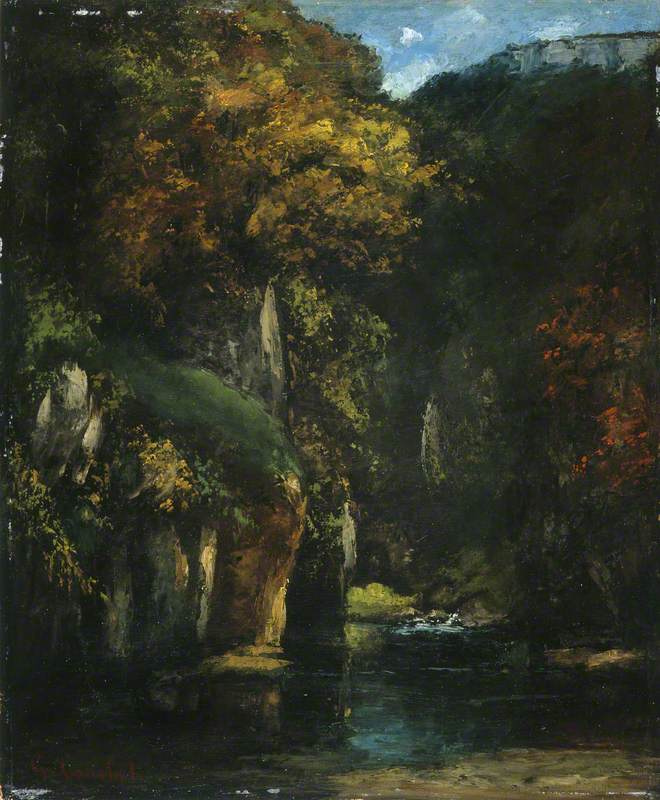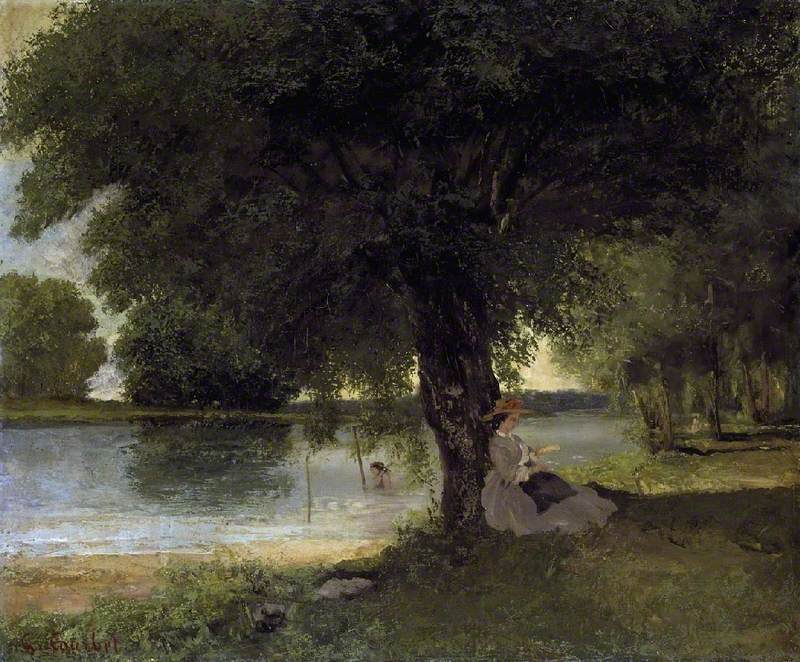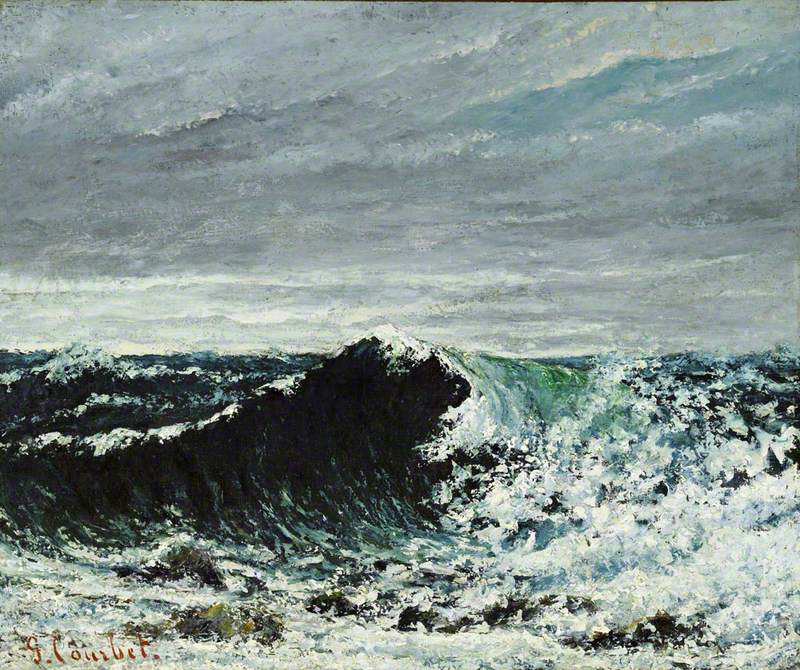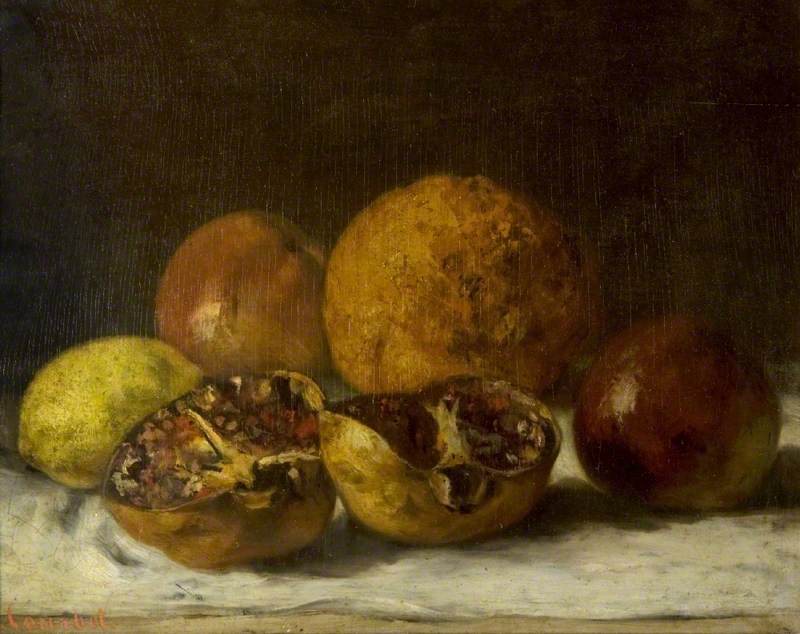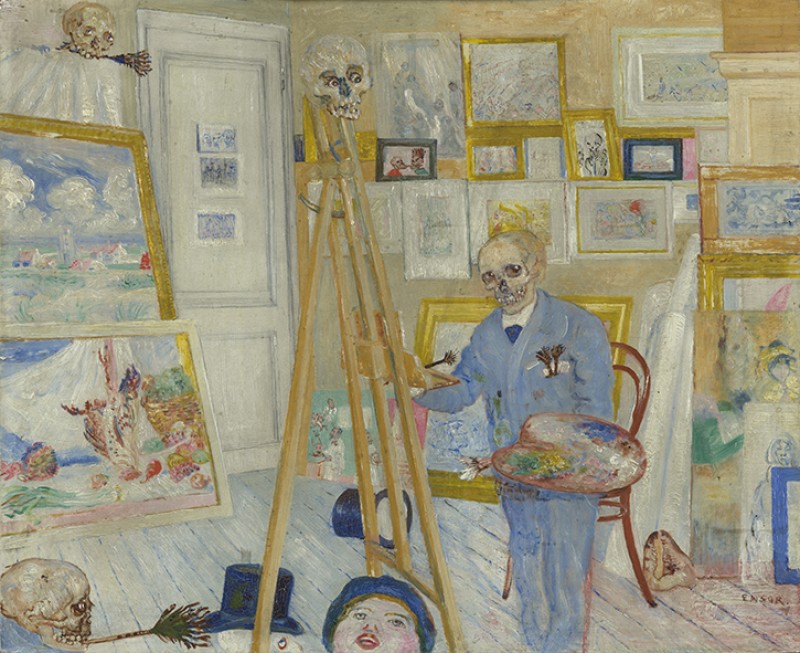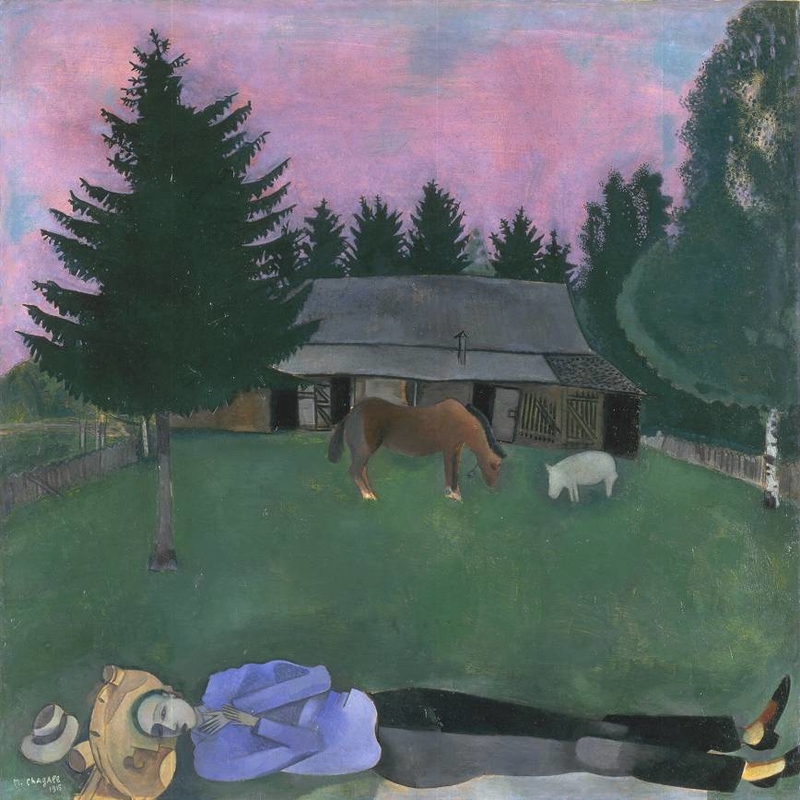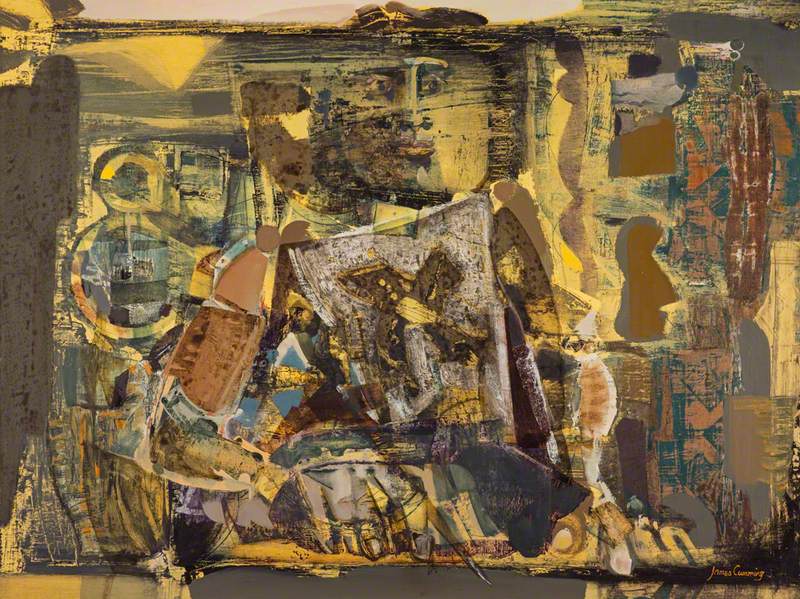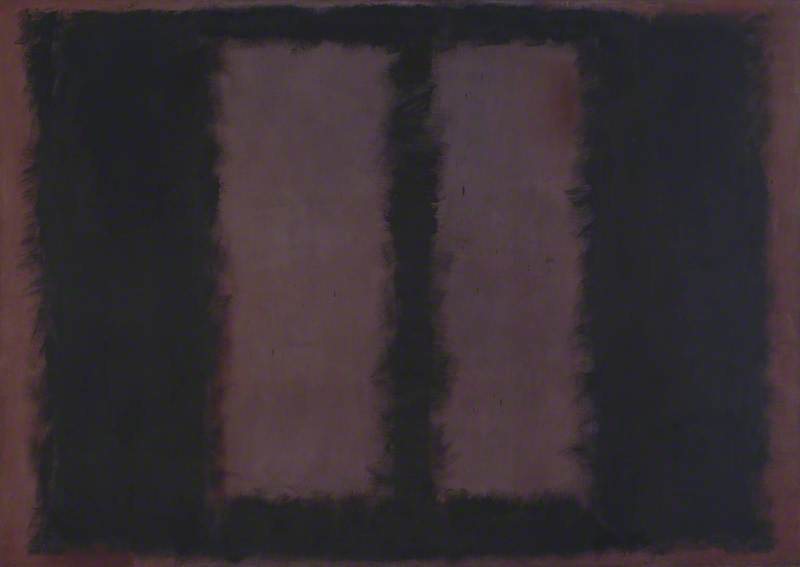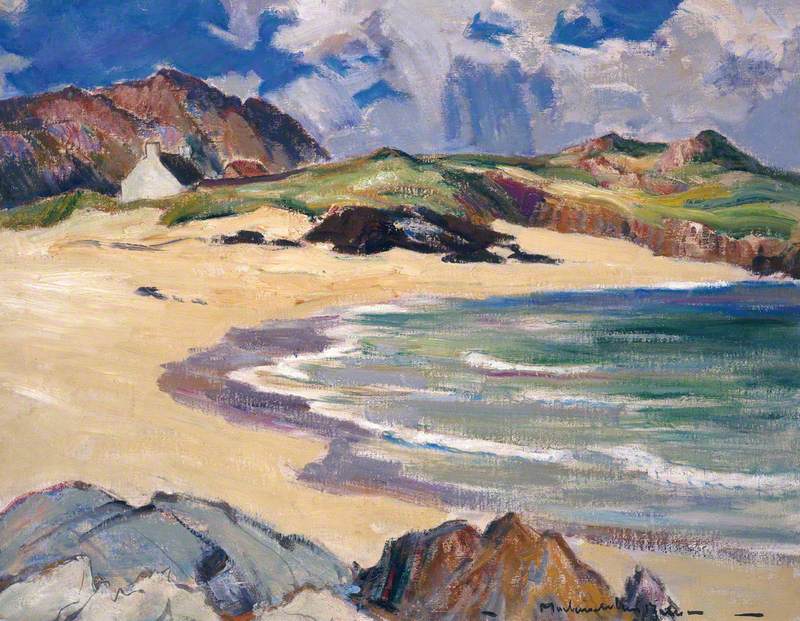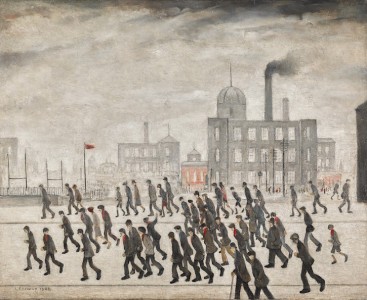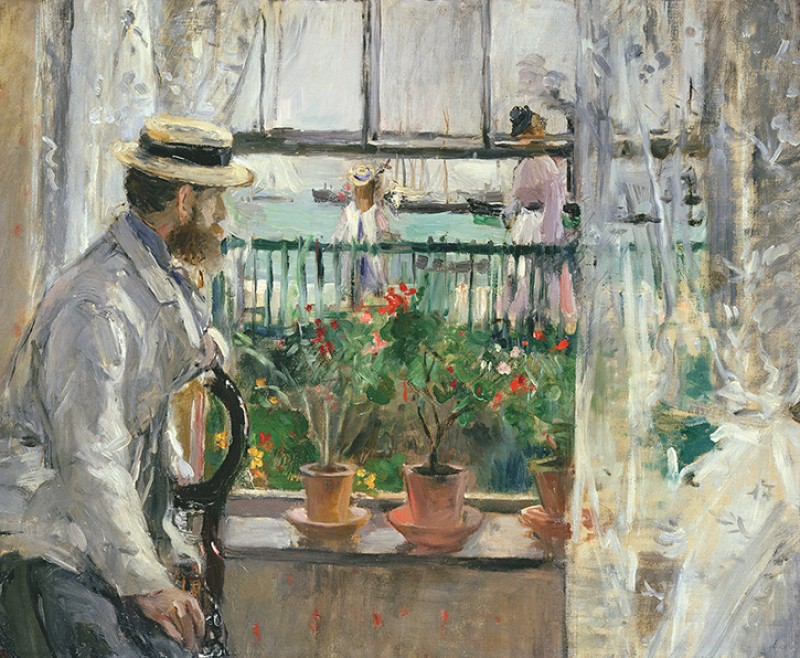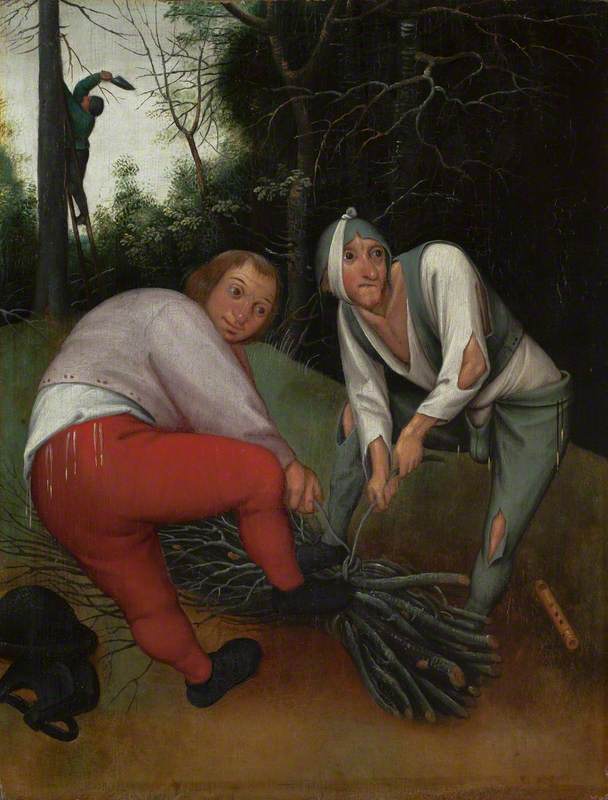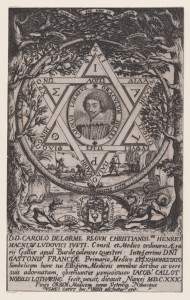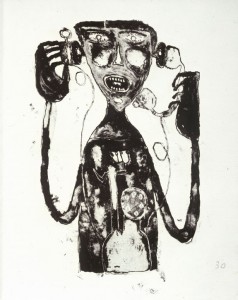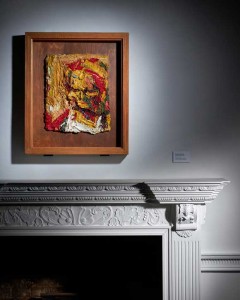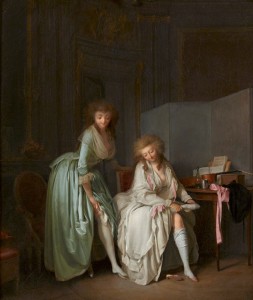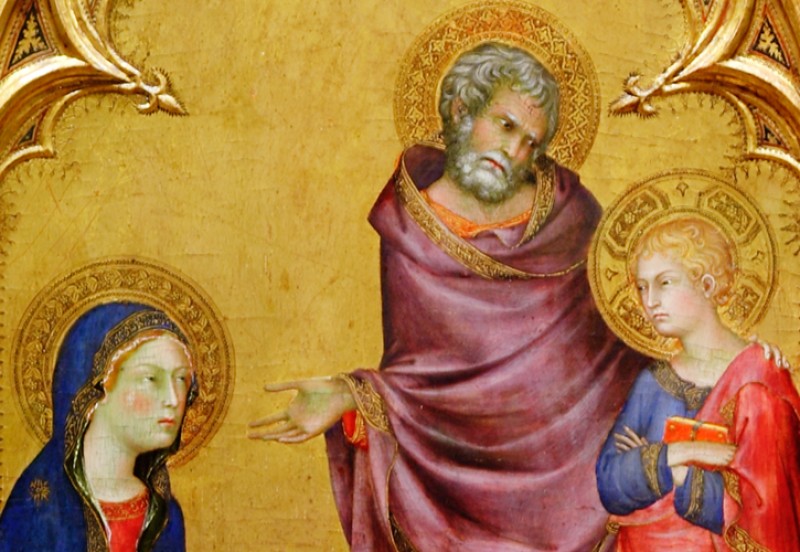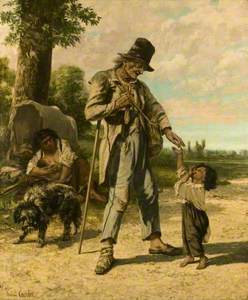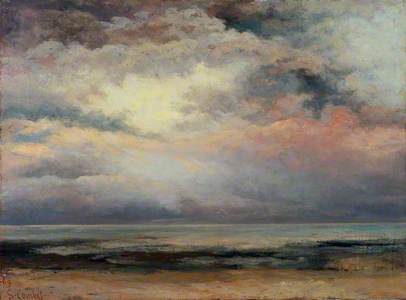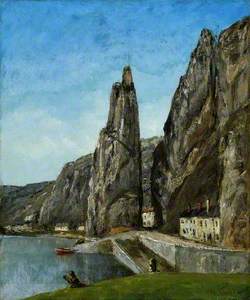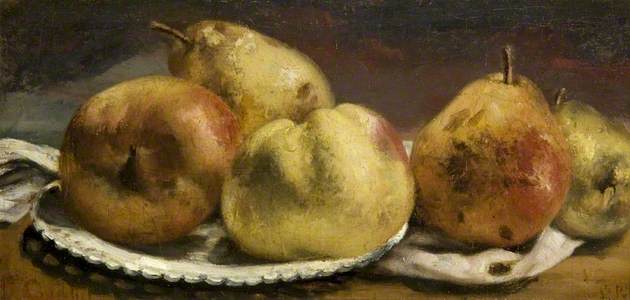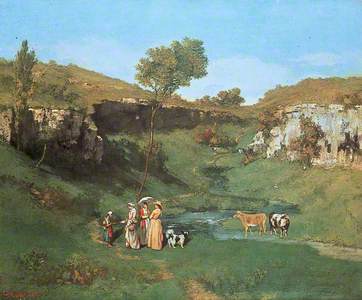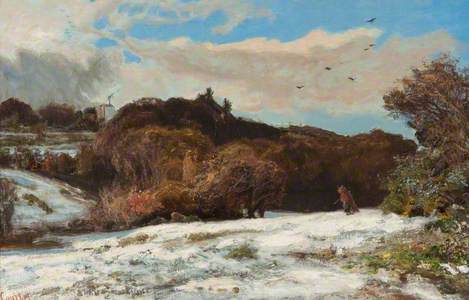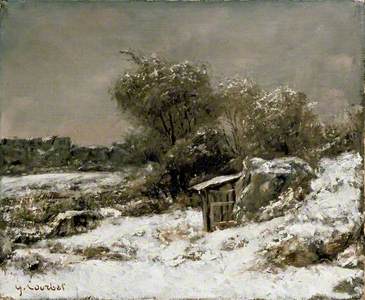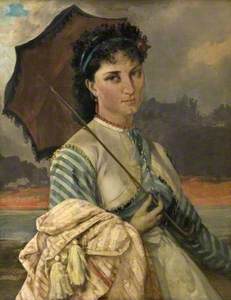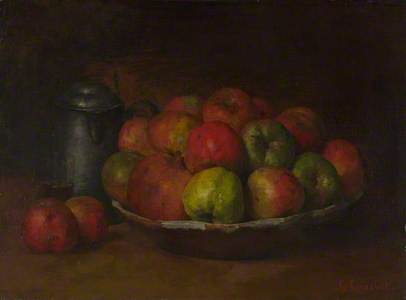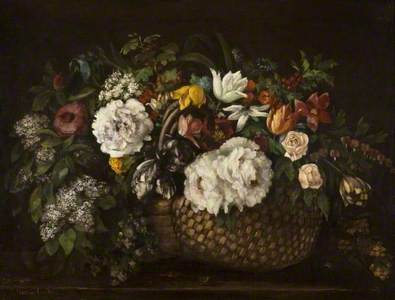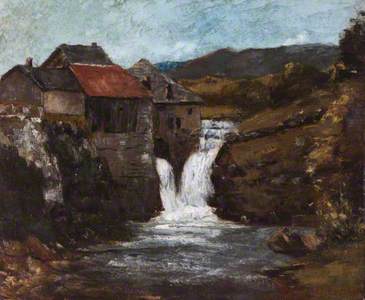A survey of the paintings of Gustave Courbet (1819–1877) reveals a fascination with women and water, subjects which recur once we're past the early self-portraits.
From these strikingly narcissistic works, we appreciate something of Courbet's arrogance and self-regard. Courbet was a rebel, an individualist and a self-proclaimed Realist. He described himself as 'the proudest and most arrogant man in France', a claim born out of extraordinary self-belief.
The Source of the Loue
1864, oil on canvas by Gustave Courbet (1819–1877) 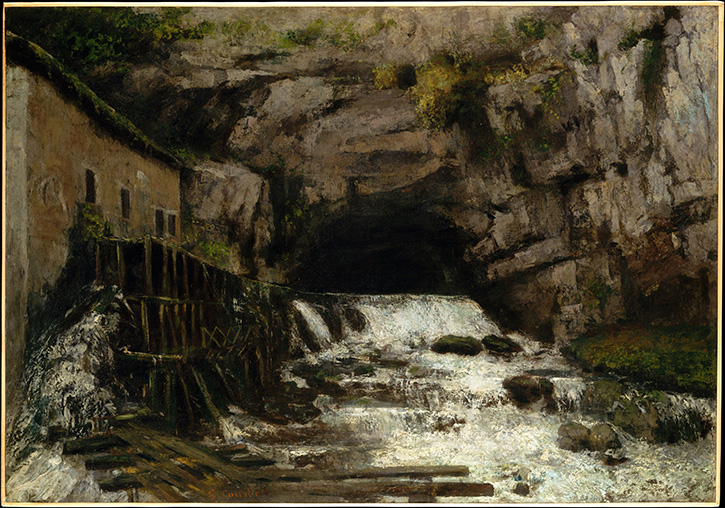
Courbet had a special interest in the sea, in rivers and in the source of rivers. The waters of the River Loue lapped against the house in which he was raised, in Ornans, in eastern France. It is a region of rocky outcrops, deep valleys and caves. Courbet painted the source of the Loue four times, and the mouths of caves and grottos clearly interested him.
Valley of the Loue, near Ornans
c.1860
Gustave Courbet (1819–1877) 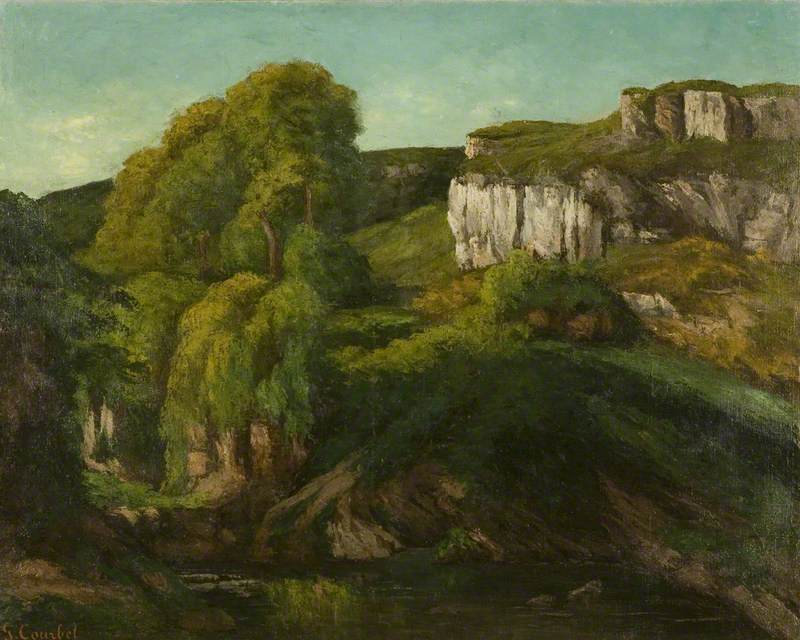
A darkness pervades many of Courbet's pictures – a literal blackness due to the dark ground he applied to his canvasses – against which his trees, rocks and water often stand out indistinctly, catching a meagre light. In the depths of his landscapes, in the cave opening from which the river emerges, that darkness is absolute.
Bemoaning the lack of a human presence, T. J. Clark considers Courbet's landscapes to be formulaic, and his weakest work. However, Courbet thought a particular view of a river valley near Ornans showed off his skills to the utmost. The drama – and personality, even – of these brooding scenes requires no human sign.
Accounts of Courbet's technique emphasise his use of a palette knife, with which he achieves a palpable textural quality. But his method was much more refined than that. As Julian Bell puts it in his 1999 book What is Painting?: 'Courbet wanted to paint the swelling fullness of things; but to do so he had to paint their emptiness and hollows'. Courbet swapped between knife and brush according to the effect he sought and, as a final touch, smoothed over the paint surface with a rag or a sponge. This resulted in what has been described by Paul Galvez as a 'glassy skin' with 'its simultaneous flatness and substantiality'.
Courbet first declared himself a 'Realist' in a letter of 1851. Realism can refer to the illusory skills of the artist in creating images that look like their subjects, as well as the choice of subject itself: the hard, unvarnished truth of it. Courbet achieves both, but his realism is distinctive for what he chose to paint. For him, painting was about representing 'real and existing things', and in so doing he saw himself as 'a sincere lover of the honest truth'.
Courbet's realism was bound up with his politics. His response to a newspaper article showed that he regarded his politics and his art as intertwined: 'M. Garcin calls me "the socialist painter". I accept that title with pleasure. I am not only a socialist but a Democrat and Republican as well – in a word, a partisan of all the revolution and above all a Realist.'
A key realist work, The Stonebreakers was reviled as a sordid depiction of menial labour and an unbecoming subject for art. Unlike other depictions of the working poor, which had a nostalgia for traditional practices or were heroic in their mood and composition, Courbet's filthy stone-workers are faceless slaves. Despite the adverse reactions, Courbet wrote to a friend: '…we must drag art down from its pedestal. For too long you have been making art that is pomaded and "in good taste"'.
In another work, a shabby beggar offers a coin to a hungry child: in the absence of welfare, the poor are reliant on each other for charity.
Courbet distrusted authority (whether it be cultural or political) and particularly despised the ruling class in France. Just as Victorian realist novels reflected a greater awareness of social inequality, so Courbet wanted to paint life as he saw it, however unpleasant or unbeautiful. He was concerned to depict what he believed everyone could experience – which accords with the novelist Henry James's definition: realism is what we might encounter, while romanticism represents what we will never know.
This opposition illuminates certain negative reactions to Courbet's works. The artist Eugène Delacroix, creator of highly romanticised historical narratives, castigated Courbet's depiction of the heavy-figured woman in The Bathers, which he described as 'abominable vulgarity and uselessness of thought'.
The Woman in the Waves
1868, oil on canvas by Gustave Courbet (1819–1877) 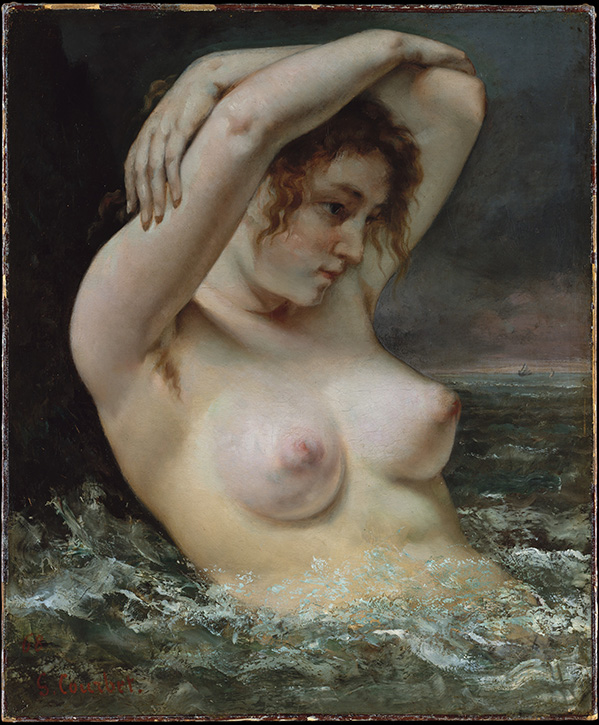
Courbet's women have natural, unidealised bodies. Unclothed, they are 'naked', rather than perfected 'nudes'. Along with the anatomically detailed backside of the bather, with its traces of cellulite (which so inflamed Delacroix), the model standing behind Courbet in The Artist's Studio has a double chin, while The Woman in the Waves has underarm hair, and the delicate skin of her breasts reveals its blue veins. Here is a very modern Venus, an ordinary woman transposed from the bathtub to the sea.
Courbet's realism is at its most provocative in his images of women. Their nakedness subverts the academic nude both anatomically and in their refusal to play the expected roles – mythical, allegorical, historical – of academic painting.
Young Ladies on the Bank of the Seine
before 1857
Gustave Courbet (1819–1877) 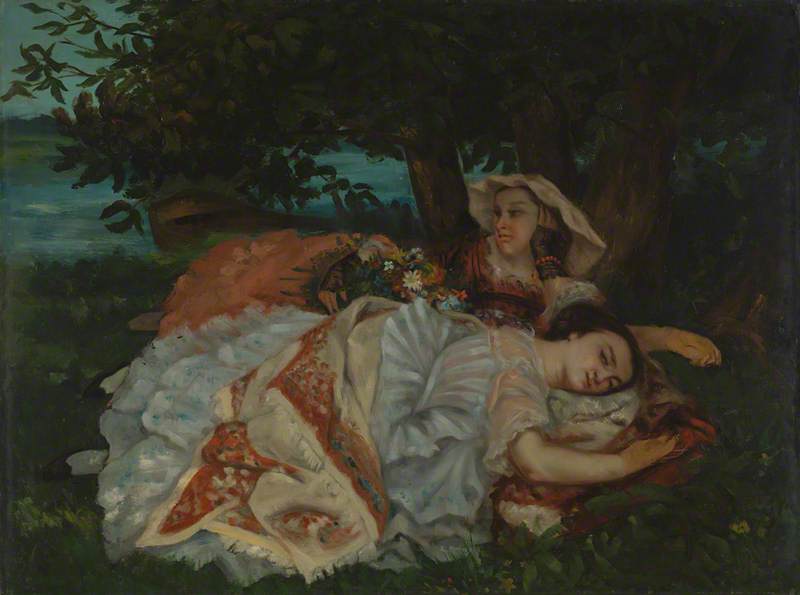
The woman lying on her front in Young Ladies on the Banks of the Seine was, ironically, considered all the more outrageous for being clothed. This painting caused alarm not only as a representation of women of easy virtue, but because we see one of them in her pale blue underwear. She is lying on her dress, with a shawl thrown over her, and seems to be looking at us through sleepy eyes, teasingly unconcerned that we are watching her. In the version in Paris, there's a gentleman's hat in the rowing boat. The mood is carelessly debauched.
Apart from in his portraits, Courbet's figures rarely make eye contact with the spectator. His women seem oblivious to our gaze. This makes us voyeurs, a feeling encouraged by what we are observing (some works are audaciously erotic), but this also bolsters the realism of the image: the subject exists whether we are present or not. This is the paradox of the realist painter, as Baudelaire realised: 'I want to represent things as they are, or as they will be supposing I do not exist'. But this is an unachievable aspiration: the mediating eye of the artist is never absent. I am not a camera.
Study for Venus in 'Venus and Psyche'
1863–1865
Gustave Courbet (1819–1877) 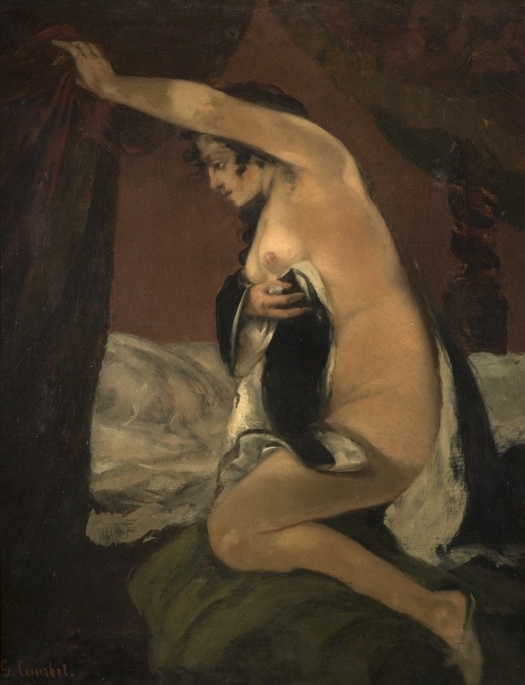
Actual cameras were the latest thing and had begun their rivalry with the painter's brushes and oils. Artists had to contend with the apparently unmatchable realism of the photograph. It is often commented that Courbet's paintings of waves have the caught-in-the-moment solidity of photographs. In these paintings, Courbet employed his palette knife with gusto, as he typically did in painting rock, and the result is rock-like, rendering the muscular drama of a crashing wave monumental.
In the example in the National Galleries of Scotland, the raking pull of the wave creates a structure like a great ribcage, made menacing by its black interior. Its top is crested like a snowy mountain ridge, and it seems we could scale the flank of it. Elsewhere, foam has scattered on impact on the rocks and hangs in the air and, behind the main breaker, lesser waves build and threaten. Over it all, a tidal sky. There's so much going on here that no camera could capture it in one shot.
Courbet's wave departs from the real appearance of a wave and yet is more wave-like than photography could achieve. We read that Courbet produced his seascapes from inside a rented house on the shore, in which 'from time to time, he went and pressed his face against the windowpane to look at the storm'. This process, fortified by gulps of cider, brought forth the fearful waves of his – and our – imagination.
A photograph achieves its realism due to light-capturing technology – consequently, the photographer might seem a passive agent. By contrast, the efforts of the painter are palpable. In Courbet's L'immensité, for example, 'resemblances are generalised', as James H. Rubin puts it, meaning that instead of creating a near-exact copy of the scene, the artist strives to represent the essence of the thing depicted, with all his subjectivity, which gives it the status of art.
Courbet used photographs to work from in certain paintings, including The Bathers. Conversely, photography took painting as its basis: Kenneth Clark compares an early photograph of a naked woman by Oscar Gustave Rejlander with Courbet's statuesque woman in The Source. In Clark's view, Rejlander achieves a finer image because it was based on Courbet's realist example.
La Source
1868, oil on canvas by Gustave Courbet (1819–1877) 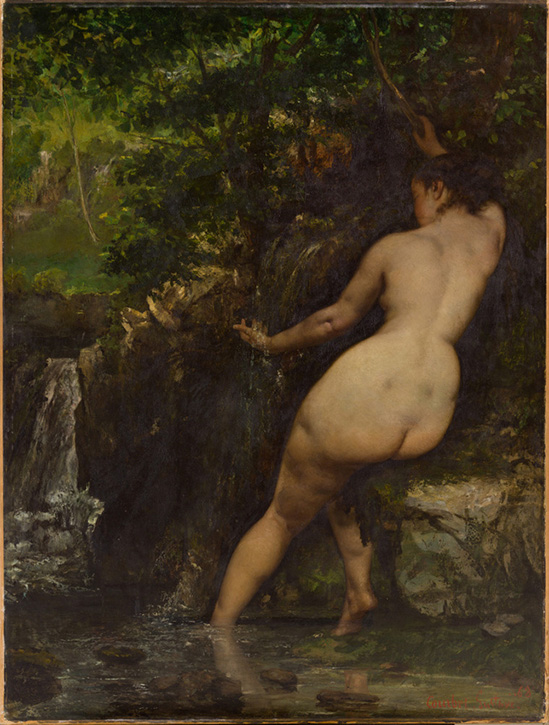
Is it fanciful to think of Courbet's caverns and shadowy grottos as analogues of bodily crevices and passages? The sea, the fullest manifestation of wateriness, with its swells and breaking waves, originates in the obscure darkness of an impenetrable fissure, just as every human being has its beginnings in such obscurity. The most infamous of all Courbet's works, The Origin of the World, presents all-too-frankly for some the source of life, or the cradle of humanity.
In 1870, Courbet refused a major award – the Legion of Honour – because he saw the prize as deriving from the state. In a letter to the Ministry of Fine Arts he pulled no punches, decrying the state as 'incompetent in matters of art'. He made plain his wish to be his own man when he said he wanted to be remembered as one who 'never belonged to any school, to any church, to any institution, to any academy, and, above all, to any regime except the regime of freedom'.
Soon after that refusal, the Franco-Prussian war began, and Courbet was made the head of a committee charged with safeguarding works of art. In that role he proposed removing the bronze reliefs from the Vendôme Column in Paris, a symbol of the establishment in France, since it was erected to celebrate Napoleon I. Nine months later, the column was destroyed, although Courbet was not directly involved in that decision. He was fined and sentenced to six months in prison.
While in prison he painted fruit – the apples, pears and pomegranates his sister brought him. In that confinement, he had to paint what he could see. Courbet's realism would not allow him to paint from his imagination. As he wrote in 1861: 'Imagination in art consists of knowing how to find the most complete expression of an existing thing, but never of inventing or creating the thing itself'. So he lowered his sights to the still life and made apples as plump as buttocks. With what Julian Bell calls 'his defiant obsession with physical fact', he made sure not to ignore their every bruise and irregularity. Compared to these, Cezanne's famous apples are uniform and bland – apples which make it to the supermarket shelf.
After his release from prison, it seemed that the whole world held him in contempt. His studio in Ornans had been looted and vandalised. His paintings were rejected for exhibition. It was debated that he should pay the cost of rebuilding the Vendôme Column, and the government began to seize his property.
In July 1873, he fled to Switzerland, where a kind of normality could resume. But he was drinking heavily, desperately trying to recoup his losses by selling paintings, and tormented by legal wrangling.
Gustave Courbet
1870s, albumen carte-de-visite by Carjat & Co (Etienne Carjat) 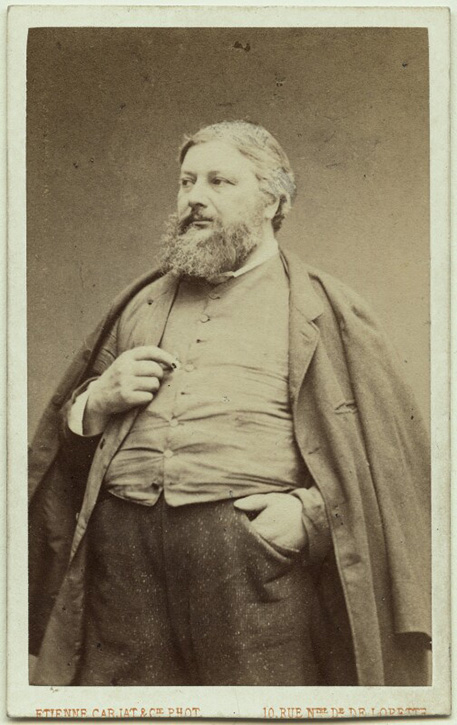
His last letters provide a detailed account of his poor health and his increasing size due to the condition of oedema, the build-up of fluid in the body. In his very last letter – to his father – he has no fight left in him: 'I no longer have the head for all that nonsense. I have had enough in the past five years.' He died on the last day of 1877.
He was the supreme artist-egoist, the maker of beautiful and radical art, yet his dabbling in politics – headstrong, naïve and fired by that self-same ego – was the ruin of him.
Adam Wattam, writer
Further reading
Petra ten-Doesschate Chu (ed.), Letters of Gustav Courbet, University of Chicago Press, 1992
Kenneth Clark, The Nude: A Study of Ideal Art, John Murray, 1956
T. J. Clark, Image of the People, Thames & Hudson, 1973
Paul Galvez, Courbet's Landscapes, Yale University Press, 2022
Linda Nochlin, Realism, Penguin, 1971
Linda Nochlin, Courbet, Thames & Hudson, 2007
James H. Rubin, Courbet (Art & Ideas), Phaidon, 1997
